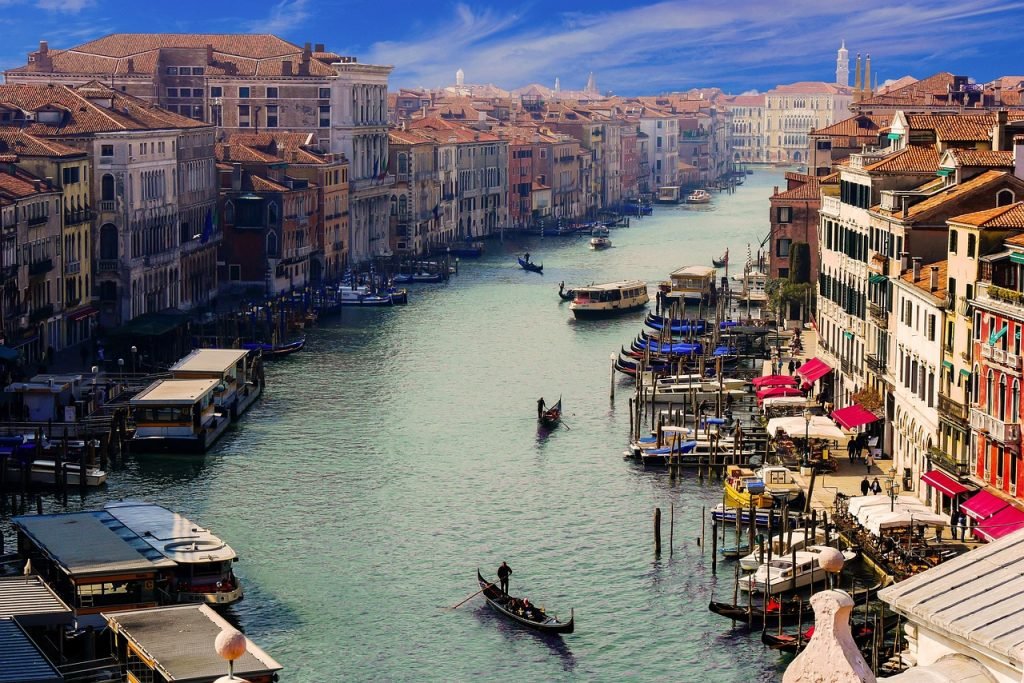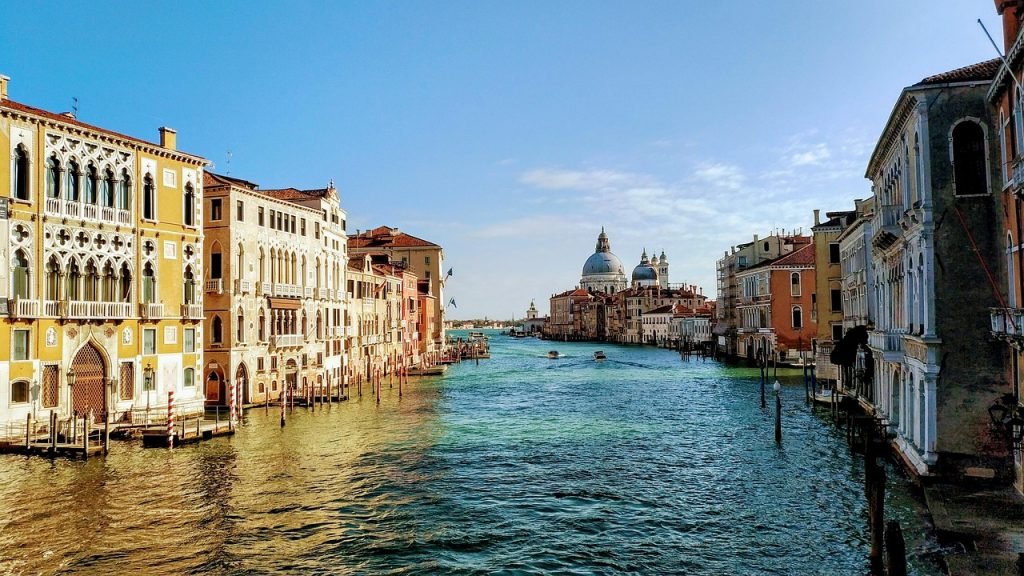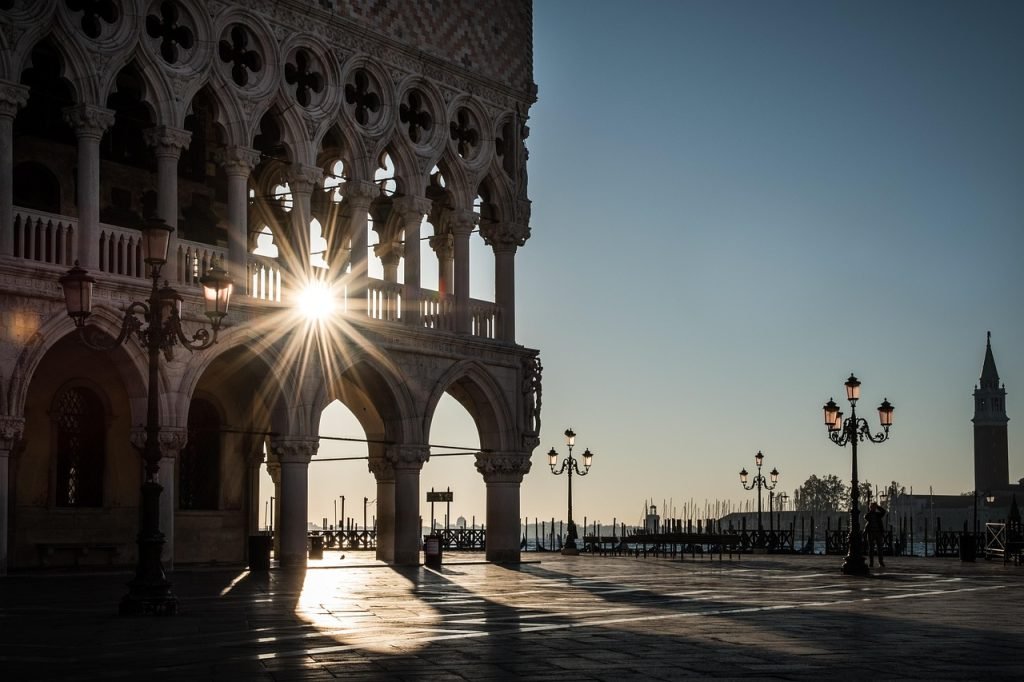Landing at Venice Marco Polo Airport marks the beginning of what will undoubtedly be one of the most transformative journeys of your life. Italy isn’t just a country—it’s a symphony of distinct cultures, dialects, cuisines, and traditions that change as dramatically as the landscape itself. Each city you’ll encounter feels like stepping into an entirely different nation, united only by an ineffable Italian spirit that somehow makes perfect sense once you’re there.
Alternative Starting Point: While this itinerary begins in Venice (my personal preference for its unmatched romantic atmosphere), you could easily start from Milan Malpensa or Linate airports if you find more affordable flights. Milan offers excellent high-speed rail connections to the rest of Italy, and we cover a detailed Milan-based itinerary in a dedicated post. The choice often comes down to flight prices and personal preference—Venice for pure magic, Milan for urban sophistication and fashion.
This carefully crafted 10-day Italy itinerary for first-time visitors will take you on a mesmerizing journey from the floating poetry of Venice in the north to the raw, unfiltered passion of Naples in the south, connected by Italy’s magnificent high-speed rail network that transforms what could be exhausting travel into part of the adventure itself.
Venice: Where Dreams Float on Water (2 Nights)
Your Italian odyssey begins in Venice, a city that defies all logic and yet exists with breathtaking beauty. After collecting your luggage at Marco Polo, resist the temptation to rush. Take the Alilaguna boat transfer into the city—this isn’t just transportation, it’s your first taste of Venetian magic as you glide across the lagoon watching the impossible skyline emerge from the mist.
Venice will assault your senses immediately. The absence of cars creates a soundscape of lapping water, distant conversations echoing off ancient stones, and the melodic warnings of gondoliers navigating narrow canals. The light here is different—softer, more golden, filtered through centuries of maritime mist and reflected endlessly off water and glass.
Day 1: Lose yourself intentionally. Venice rewards wanderers more than planners. Start at St. Mark’s Square before dawn when you’ll have this architectural marvel nearly to yourself. Watch the city wake up as merchants set up their stalls and pigeons begin their daily dance. Book your Doge’s Palace visit online in advance, then spend the afternoon in the Dorsoduro district, where local life unfolds away from the tourist crowds.
Day 2: Take the ferry to Murano and Burano. Murano’s glass-blowing traditions date back over 700 years, and watching a master craftsman shape molten glass into art is hypnotic. Burano’s rainbow-colored houses aren’t just Instagram fodder—each color tells a story of fishing families returning home through fog.
The food in Venice is a revelation for first-timers. Forget what you think you know about Italian cuisine—Venetian cooking is heavily influenced by centuries of trade with the East. Try the sarde in saor (sweet and sour sardines), risotto al nero di seppia (squid ink risotto that’s as delicious as it is dramatic), and bacalà mantecato at a bacaro, Venice’s version of tapas bars.
The Journey South: Italy’s High-Speed Rail Revolution
Here’s where your Italy itinerary becomes effortlessly elegant. Italy’s high-speed trains—Trenitalia’s Freccia Rossa and Italo—are engineering marvels that shrink the peninsula. Traveling at speeds up to 300 km/h, these trains offer comfort that puts most airlines to shame, with spacious seats, onboard wifi, and panoramic windows that transform the journey into a moving documentary of Italian landscapes.
A word of caution: While Italy’s high-speed rail network is generally reliable, both Freccia Rossa and Italo can experience delays. Don’t plan connecting activities with tight schedules—allow at least 1-2 hours buffer time for important connections or pre-booked tours. The Italian concept of time is more fluid than you might expect, and rushing through this beautiful country defeats the purpose of experiencing la dolce vita.
Book your tickets in advance online for significant savings, and always validate paper tickets before boarding. The beauty of train travel in Italy is the freedom it provides—no airport security lines, no baggage restrictions, and stations located in city centers rather than distant airports.
Bologna: Italy’s Delicious Secret (1 Night)
Bologna might be your shortest stop, but it could easily become your favorite. This is Italy’s food capital, a title it wears with justified pride. The city’s medieval center, with its 38 kilometers of covered walkways (portici), creates an intimacy that larger Italian cities sometimes lack.
Bolognese people are different—warmer, more direct, less concerned with appearances. They’re also serious about food in a way that borders on religious devotion. This is where you’ll taste the real ragù Bolognese (never, ever called “spaghetti Bolognese” here—it’s served with fresh tagliatelle), tortellini in brodo that’s pure comfort in a bowl, and mortadella that bears no resemblance to American bologna.
Visit the Quadrilatero market district in the morning when vendors shout in thick Emilian dialect and the air is thick with the aroma of aged Parmigiano-Reggiano and cured meats. Climb the Torre degli Asinelli for a panoramic view of the terracotta rooftops that give Bologna its nickname, “La Rossa” (The Red One). For dinner, seek out an osteria—these informal taverns serve the kind of food that would make an Italian grandmother weep with joy.
Florence: Where Renaissance Dreams Come Alive (1-2 Nights)
The train journey from Bologna to Florence takes you through the heart of Tuscany, where cypress-lined hills and vineyard-covered slopes create the Italy of postcards and dreams. Florence hits you like a Renaissance thunderbolt—nowhere else on earth contains such a concentration of artistic genius within such a compact space. Florentines are proud. They speak the purest Italian, their city gave birth to the Renaissance, and their artistic heritage is unmatched.
Must-do experiences: Ponte Vecchio and Santa Maria del Fiore will be your postcard. Book your Uffizi tickets months in advance. The David at the Accademia is worth the crowds, but don’t miss the lesser-known treasures like the Oltrarno district, with Giardino di Boboli and Piazzale Michelangelo viewpoint.
The food in Florence is rustic elegance personified. Bistecca alla Fiorentina (massive T-bone steak) is a religious experience for meat lovers, served rare and seasoned simply with salt. Try ribollita (a hearty bread and vegetable soup), and any pasta with wild boar sauce. The gelato here sets the standard.
Rome: The Eternal City’s Endless Embrace (2-3 Nights)
The high-speed train from Florence to Rome takes less than 90 minutes, but you’re traveling through millennia of history. Rome defies easy categorization—it’s simultaneously ancient and modern, chaotic and organized, overwhelming and intimate. Rome requires at least two full days, but three is better if you want to do more than simply check boxes. The city rewards those who embrace its seemingly chaotic rhythm—aperitivo hour that stretches into dinner, and meals that last for hours.
Day 1: Start before dawn at the Colosseum, then walk through the Roman Forum and up to the Palatine Hill. The afternoon belongs to the Vatican—the Sistine Chapel will leave you speechless, but book a guided tour to avoid the worst crowds and to understand what you’re seeing.
Day 2: Explore “real” Rome. Start at Campo de’ Fiori market in the morning, then wander through Trastevere’s narrow streets. Throw a coin in the Trevi Fountain (but go early morning or late evening to avoid human sardine conditions), climb the Spanish Steps, and spend the evening in a traditional Roman trattoria.
Do you have 3 days? Great here is a dedicated guide: Perfect 3-Day Rome Itinerary
Roman cuisine is bold, uncompromising, and based on ingredients that sound humble but create magic in the right hands. Try carbonara (made only with eggs, pecorino cheese, guanciale, and black pepper—no cream, ever), amatriciana, and cacio e pepe. Roman pizza al taglio (by the slice) is completely different from Neapolitan pizza—thin, crispy, and sold by weight.
Naples and the Amalfi Coast: Italy’s Passionate Heart (3 Nights)
The journey from Rome to Naples by high-speed train takes just over an hour, but you’re entering a completely different Italy. Naples is raw, unfiltered, and utterly authentic—a city where emotions run high, voices carry across crowded piazzas, and life happens in the streets with an intensity that can be overwhelming for first-timers but becomes addictive once you surrender to its rhythm.
Naples (1 night at least):
Don’t let preconceptions keep you from experiencing authentic Naples. The historic center is a UNESCO World Heritage site filled with incredible churches, underground Greek and Roman ruins, and the best pizza on earth. To live fully your visit I made the following post: 15 Essential Naples Experiences.
Pizza was invented here, and Neapolitan pizza is a religious experience—thin crust charred in wood-fired ovens, simple ingredients of extraordinary quality, and a texture that’s simultaneously crispy and chewy.
Sorrento (2 nights):
The train to Sorrento takes you along the coast with glimpses of the Mediterranean that will make you understand why this region has inspired artists for centuries. Sorrento is more polished than Naples, perched on cliffs overlooking the Bay of Naples with Mount Vesuvius brooding in the distance. The town specializes in limoncello made from local lemons the size of grapefruits, and the seafood is extraordinary.
Using Sorrento as your base for two nights is the smartest strategy for exploring this region without the stress of constant packing and unpacking. The town offers excellent transportation connections and a more relaxed pace than the busier coastal destinations.
Capri (Day trip from Sorrento): Take the ferry from Sorrento to Capri, an island that has seduced everyone from Roman emperors to modern celebrities. Have lunch overlooking the Faraglioni rocks and understand why this island has been a playground for the wealthy for over 2,000 years.
Amalfi Coast (Day trip from Sorrento): On your second day, take the SITA bus or join a tour to explore Positano and the Amalfi Coast. The drive along the coast is one of the world’s most spectacular—a narrow road carved into cliffsides with the Mediterranean sparkling hundreds of feet below. Return to Sorrento for your final night before catching your flight from Naples the next day.
Important Timing Considerations
This is the absolute minimum: The nights suggested in this itinerary (Venice 2, Bologna 1, Florence 1-2, Rome 2-3, Naples/Amalfi 3) represent the bare minimum to get a taste of each destination. I strongly recommend adding extra nights wherever your budget and schedule allow—Italy rewards those who linger rather than rush.
Essential day trips you’ll want to consider:
- From Florence: Pisa for the iconic Leaning Tower (1 hour by train), or the Tuscan hill towns of Siena and San Gimignano
- From Naples: Pompeii and Mount Vesuvius (unmissable archaeological wonders), or the opulent Reggia di Caserta (Italy’s answer to Versailles)
- From Rome: Tivoli’s Villa d’Este and Hadrian’s Villa, or the charming hill towns of Frascati and Castelli Romani
Adding just one extra night to each major destination transforms this itinerary from a whirlwind tour into a more immersive experience that allows for spontaneous discoveries—the chance encounters and unplanned moments that make Italy truly magical.
The Italy That Changes You
This Italy itinerary for first-time visitors introduces you to the Italian way of life that values beauty, family, tradition, and the simple pleasure of a perfect meal shared with people you care about. You’ll return home with more than photos and souvenirs. You’ll carry with you a new understanding of how life can be lived with passion, style, and an appreciation for the things that truly matter.
Each region will surprise you with its distinct personality, from Venice’s ethereal beauty to Naples’ raw authenticity. The high-speed trains connecting these diverse destinations make the journey as memorable as the destinations themselves, turning travel time into an opportunity to watch the Italian countryside unfold like a living painting.
Italy doesn’t just show you its treasures—it invites you to become part of its ongoing story, if only for ten magical days that will leave you planning your return before you’ve even left.


